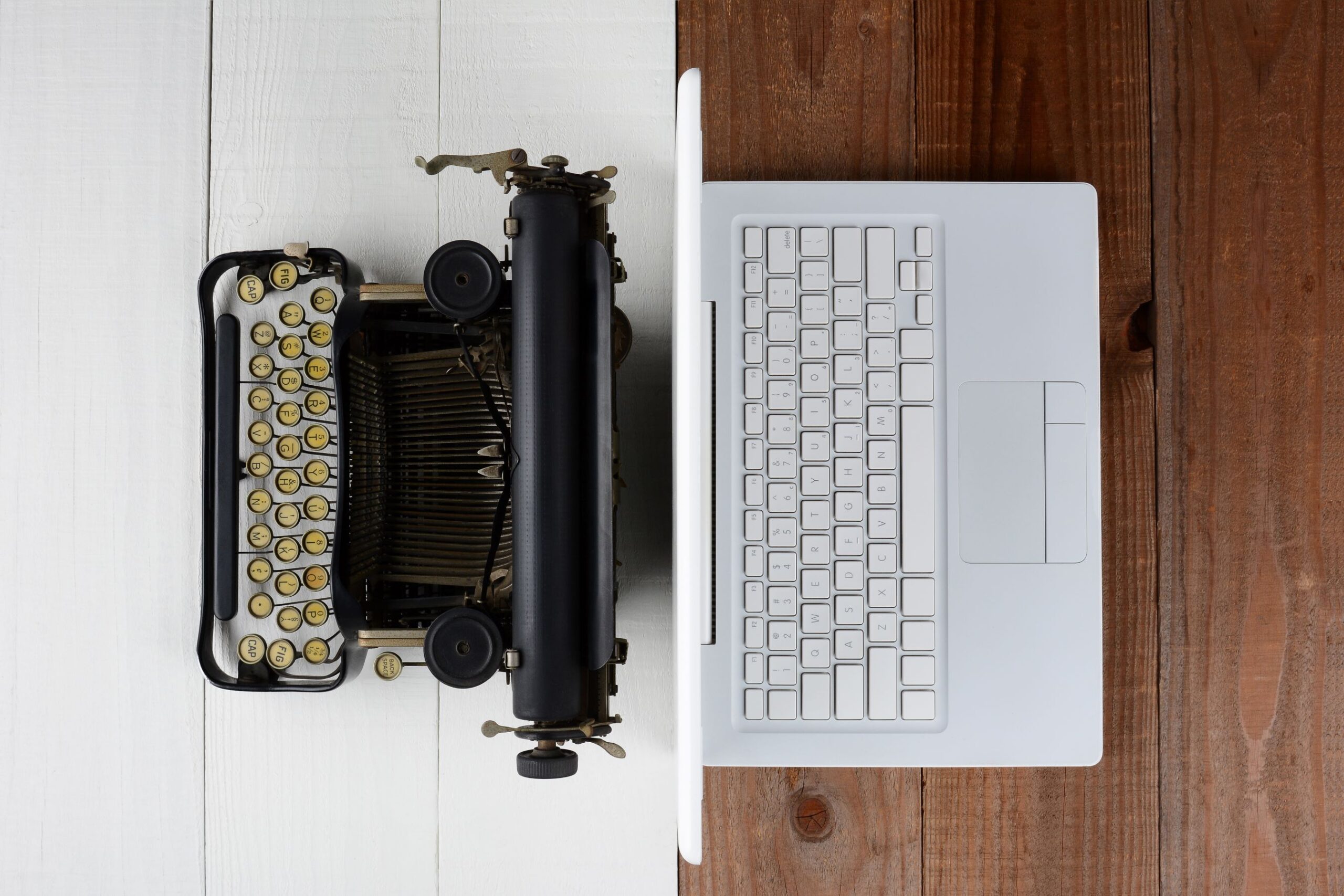
(Adobe Stock)
“Back straight, feet on floor, fingers on home keys, three-two-one-and-type!” Sister Lorraine timed our drills with military ferocity. Except for the morning my friend Jenny cracked open the classroom door and sent a little wind-up Woodstock clattering across the floor, headed straight for the nun shoes. All that tension Sister created on purpose, sure that we would wind up stressed secretaries, smashed into hysterical giggles.
Still, every time I sit down to type (cannot say “key”), I straighten my back and set my feet parallel. Old habits. Is that all a typewriter is? I want to say no, because I still miss using one. An antique Royal sits dusty on the floor of my office, waiting, like a vagrant in the subway, for what never happens. I could clean it up, spool a new ribbon through that little metal guide, roll in a fresh white sheet of paper. But I would lose my memory. My ability to cut and paste entire paragraphs with a click. My ability to fix mistakes without blowing on goopy Wite-Out.
There is no going back. Are there ways, then, to recreate what I miss? Old typewriters were beautiful. The “new” ones we used in typing class, less so. Why does progress so often make objects uglier? Why is it unthinkable to design a laptop with a glossy enameled black surround, brass edges, beautiful keys, an elegantly framed monitor? Because we want no friction, no weight, no reminders. The screen is meant to feel like the entire world, not be tightly constrained within an obvious frame. The keys should slide unnoticed beneath our fingers.
Unnerving, that silence. Only old keyboards make a clack, and running your fingers over them is never as satisfying as pounding keys and slamming a carriage back. Typewriters were expressive. They could feel careful and precise, angry, emphatic, sloppy, breezy, sure. Keying always feels the same. The only nervous habit I can employ is a light, impotent tapping of my thumb against the space bar as I think. The only possible exuberance is a sedate Save and Print, nowhere near as cathartic as swiping the carriage over and triumphantly yanking the finished page from the roller.
There was an aggression to typing, back when it was mainly men who did it. They had learned to read and write first, too. Hopefully, they declared the pen mightier than the sword. But then Remington used its rifle-stamping mechanisms to build the first American Type-Writer. Mark Twain bought himself a “new-fangled writing machine” immediately, remarking upon its swiftness and ability to pile “an awful stack of words on one page.” In 1883, he banged out the first typescript published in this country.
“Banged” is the right word, because as the writer and scholar Barry Sanders once noted, “Remington’s levers, links, and triggers had made the typewriter resemble in kinetic spirit a kind of machine gun.” There was nothing peaceable about it. When swords are bent into plowshares, death vanishes. But the American typewriter transformed gentle scribbling into gunfire.
Maybe that is why I liked it. Typing felt powerful. Its energy was physical, vibrating with each stroke, and it was loud. No better sound than a newsroom with dozens of reporters typing up their scoops, because you knew something was happening, something that would make at least a tiny dent in the universe.
Writers absorbed their tool’s nature. Susan Sontag: “I go to my typewriter as I might go to my machine gun.” Tom Robbins: “At the typewriter you find out who you are.”
Some disagreed, saying it was artful, expressive handwriting that revealed the author’s personality. Typewriters were coolly mechanical by comparison. A typewriter, Marshall McLuhan announced, “fuses composition and publication”; its product was uniform, and far more public than private.
In my twenties, I did draft everything in longhand. Then, brainstorming with a bolder colleague, I watched him try ideas, erase them, try again, erase, on his clunky gray computer, and I saw how forgiving it was, how anonymous and immaterial, retaining no evidence of folly, requiring no crumpled paper others could use to gauge your frustration.
Now I have to force myself to start in longhand, even though I believe it encourages thought and feeling in a way a keyboard cannot. Speed and ease sing us toward the new. Why write when I can type? Why type when I can key? Restoring the Royal would leave me with bent, arthritic fingers. Rather than use an old, cumbersome machine, I can simply remind myself to pause and think. I can tap out an entire essay with only a whisper of sound, only the slightest dance of my fingertips on these ugly keys. I can look for other ways to infuse energy and power and a sense of agency, without throwing my whole body into the process and making a huge racket.
We are constantly making things easier, faster, quieter. We want every process to be forgiving, invisible, available. In the bargain, we lose excitement—banging out a strong missive, waiting for a roll of photos to be developed. We also lose a partnership with the physical, whether playing with lenses and filters or winding inky ribbon. Now we shoot and write with light.
A little nostalgia bubbles up from time to time. We put old-time telephone rings on our cell and make our texts sound like telegraphs, or we read that Ann Patchett loved her old Hermes typewriter, or a photographer returns to film for arty effect. But we never really go back, do not even want to go back. Yet we miss the physical with an ache I cannot imagine feeling for this ergonomic plastic keyboard. That is the conundrum of our sort of progress: we leave so much feeling behind.
Read more by Jeannette Cooperman here.
